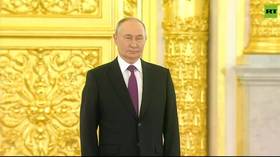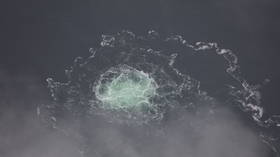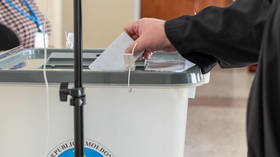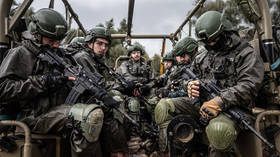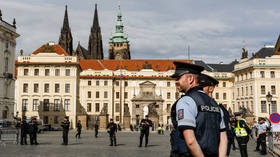NATO air forces unable to do Syria real harm
NATO hasn’t enough airplanes and cruise missiles near Syria to inflict decisive damage on the country’s military, senior Russian military expert Konstantin Sivkov said. US-led forces entering Syria would mean total war in the Middle East, he told RT.
During the Syrian civil war there has been little harm caused to
the the country’s air defense systems, which continue to function
quite effectively, said Sivkov, who is first vice president of
the Academy of Geopolitical Problems and a former officer of the
General Staff of the Russian Armed Forces.
Syria is not Libya
Even in Libya, where much weaker air defenses largely remained inactive, NATO air forces had to waste additional resources to be sure not to come under fire from ground forces, and this prevented the invaders from gaining total control of the Libyan skies, Sivkov said.
The Syrian situation is different altogether, he added.
“The current NATO forces, mostly American, present in the region cannot do serious harm to the Syrian state and army,” Sivkov said.
Media reports say that the US Navy has two air carriers with about 120 jets that could be directly involved in the assault on Syria. Altogether, NATO has about 280 cruise missiles on warships and submarines near Syria.
According to Sivkov’s calculations, even without active countermeasures on the behalf of the Syrian armed forces, this would be enough for the US-led forces to destroy only about 30 or 35 targets inside the country. In case these targets were shielded by short-range anti-aircraft systems such as the Pantsir-S1, the likelihood of targets being destroyed would be three or four times less.
“That means that at the moment NATO cannot do decisive damage, changing the balance of power in Syria,” Sivkov said.
“According to my estimates, if NATO wants to destroy Syria’s
military infrastructure and make sure that the Islamists get the
upper hand in the conflict, the alliance needs to concentrate in
the region about three times more air forces and about four times
more cruise missiles. That would be enough to suppress Syria’s
air defenses and destroy its military potential,” Sivkov
said, adding that bringing additional forces to the region would
take Western forces about a month.
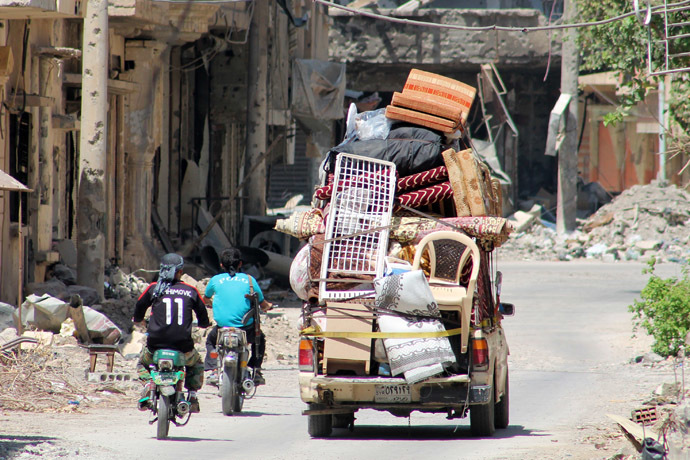
‘Syrian air defense crews’ skills are decisive’
Air Power Australia reported that Syria has about 900 anti-aircraft batteries, over 4,000 MANPADs and around 4,000 air defense guns. Though most Syrian air defense systems are outdated, a large number of Soviet-made missile batteries have been upgraded over the last decade and now have advanced capabilities.
Moreover, Damascus has recently bought dozens of Russian medium-
and short-range air defense systems, such as the Buk-M2E (NATO
designation SA-17 Grizzly) and the Pantsir-S1 (NATO designation
SA-22 Greyhound).
According to various reports, Syria also possesses an unknown
number of Russian S-300 long-range air defense missile systems.
“Some say S-300s were supplied to Syria from Belarus years ago, while others insist the delivery happened some time ago from Russia within the framework of technical-military cooperation,” Sivkov told RT. “If Syrian personnel have properly learned how to operate the Russian systems supplied to the country, than Syrian air defenses can give battle to an assault by the US Air Force.”
‘Assad real target of NATO airstrikes’
It is not that the Americans do not care about possible losses among the civilian population in Syria in case of an invasion, but a new war would mean deaths of American soldiers and spiraling costs that would lead to social programs inside the US being slashed, Sivkov said.
Most Americans, over 60 percent, are against a military operation in Syria, he said, adding that’s why such US hawks as Zbigniew Brzezinski and John McCain have spoken out against a ground operation in Syria.
NATO’s strike on Syria would be disguised as a “warning” while the real targets of the assault would most probably be President Bashar Assad and other senior figures in his regime, Sivkov said. He added that if the Americans did put troops in on the ground in the country, it would lead to a situation like that in Afghanistan.
While the Americans could invade Syria with the help of Turkey and Israel, and the Syrian army would be defeated in a month or two, this would lead to a guerilla war that would have drastic repercussions for the US and its allies, Sivkov said. Islamist groups currently fighting against Assad would then turn on the US, he added.
“As an example of America’s past allies killing their former friends, you can recall Benghazi, where the US ambassador was pulled out of the embassy building and slaughtered,” Sivkov said. “At present, Syria is Iran’s outpost. Syria has already become a battlefield for the international forces fighting on both sides. There are Kurdish militia, Hezbollah and Iran’s volunteers fighting for the country’s president, apart from the Syrian army.”
But there are practically no Syrians any more among the
opposition forces, Sivkov said, as they are principally made up
of foreign militants and terrorists who openly ally themselves
with such organizations as Al-Qaeda.
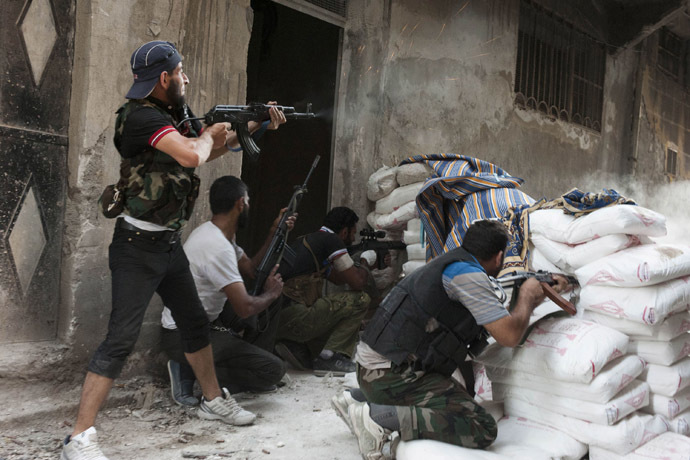
‘Total war’ in the Middle East
If there is an attack on Syria and the US enters this war on the same side as Al-Qaeda against Assad, this would inflame the whole Middle East, while volunteers from Iran and Iraq, Europe and probably Orthodox Christians from Russia would join the war in considerable numbers, Sivkov said.
The Arab states would step in, too, and most likely Shia Muslims would fight for Assad against the Saudi Arabia-led Sunnis, mostly from Libya and Egypt, Sivkov said. “Many other states would join the conflict, and among them Israel, which is certain to take the side of the [anti-Assad] coalition. If Israel enters the war against Syria, i. e. allied with Sunni Islamist militants and initiates strikes on Syria – Iran is likely to respond with long-range missiles it has. Many forces in the Arab world would recoil from insurgents in that case, there will be forces that opt to attack Israel, that’s how the war would engulf the entire region,” Sivkov said.
If there are NATO missile strikes on chemical munitions depots, poisonous substances there would be sprayed onto the ground as a result of explosions, Sivkov said. This would have drastic consequences, such as contaminating land, and it would be a major blow to all forms of life on territory extending far from the strikes, he said.
“If there are airstrikes on chemical weapons depots – this would be a severe blow to the Syrian people,” Sivkov said.

Fallout from the Arab Spring
As a result of the Arab Spring, the US lost control over all of the North African regimes they used to have at the time of the USSR, Sivkov said.
“The Arab dictatorships and monarchies used to seek American patronage not because of US military power, but because they were afraid of the Soviet Union. After the USSR collapsed, they found out that American patronage is of no use to them,” Silkov told RT, adding that the same applies to European countries and probably the whole post-WWI Bretton-Woods dollar-based economic system.
“All this was necessary while the west was collectively resisting the might of the USSR,” he said. “When the menace disappeared, US world domination became a burden. By engineering the Soviet collapse, the US has written itself off.”
The statements, views and opinions expressed in this column are solely those of the author and do not necessarily represent those of RT.


